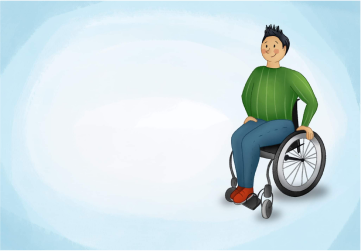Although medications can be an important part of managing chronic pain, they come with a host of side effects that you might not always want to deal with. Sometimes, you just want to ride out the pain and get through to the other side, but how do you take your mind off the pain? Is it even possible?! Let’s find out.
Can you really just take your mind off your pain?
Although you feel pain physically, there’s a strong mental element too. When you’re struggling, it can be tempting to focus excessively on the pain and think about how unbearable it is (called “ruminating”). You might also find yourself “catastrophising”, or thinking thoughts like “it will never get better” or “there must be something seriously wrong with me”.
Hey, who can blame you? Chronic pain is a terrible thing to experience, and we all have days where we find it difficult to put on a brave face. However, research shows that ruminating and catastrophising can actually make your perception of pain worse.
Mind-body therapies can help to alleviate pain by changing the way you perceive it. According to one study published in Current Biology , you can do this by refocusing your attention on something else. Here are five techniques that might help take your mind off pain.
1. Deep breathing and meditation
Both deep breathing and meditation train your mind to stay focused on one particular thing – a sound, a mental image, or of course, your breath. With regular practice, it becomes easier to stay focused and stop your mind from drifting back to your pain. You’ll also learn to consciously relax your muscles, reducing pain and tightness caused by tension.
Here’s a basic meditation you can try right now! Find a quiet, comfortable spot and sit with your palms open and facing upward. Close your eyes and envisage the area around your navel. Breathe deeply into that area, letting your abdomen (not your chest!) expand. Hold for a count of four, and then breathe out with a long, slow, controlled breath. If your mind drifts, simply acknowledge the thought without judgement and bring your attention back to your breath.
There are many free guided meditation videos and podcasts available online, so explore them and find one that works best for you.
2. Mindfulness
To practice mindfulness, pick one of your favourite activities and become fully immersed in it. Notice every detail of what you’re doing, how it makes you feel, and how your body and mind are responding.
You can practice mindfulness with any activity you like: walking, crafting, gardening, reading, doing puzzles, baking, learning something new, creating art, or even simply enjoying dinner. Being fully present in the activity can help to relegate pain to the back of your mind.
3. Exercise
Endorphins are feel-good chemicals that help to improve your mood and block pain signals. Exercise is great for stimulating endorphin production, which is one of the reasons it’s so widely recommended for pain management.
Exercise doesn’t have to be strenuous to give you an endorphin hit. Try gentle stretching or mind-body exercises like yoga or tai chi, which incorporate breath control, meditation, and gentle movement to stretch and strengthen muscles.
4. Refocusing
Refocusing involves consciously switching your attention to a part of your body that is pain-free. This may be difficult at first, but there will be somewhere, such as your ankles, chest or face, that isn’t in pain. Focus on that area, relax into that pain-free sensation and allow it to become your predominant feeling. This can help to stop the experience of pain from overwhelming you, mentally and physically.
5. Deciphering the pain
Most techniques focus on thinking about anything other than the pain, but it can actually be helpful to zone in on the pain and untangle the specific sensations.
Concentrate on the feelings that make up the pain. Is it sharp or dull? Warm or cold? Does it fluctuate in intensity? Psychology Today explains that this separating out of the sensations is called “sensory splitting”. It shows you that what you imagine as a solid block of pain, is actually many different and constantly changing sensations. You’re reminded that pain is not permanent, making the mental experience and perception of pain a little more manageable.
Try these five tips for taking your mind off pain and let us know how you got on!




